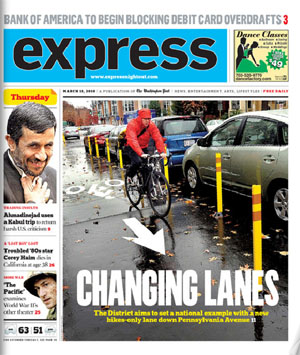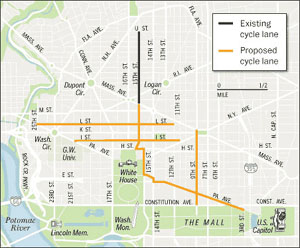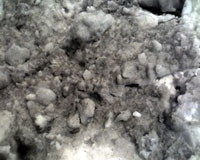|
It’s not just that places like Times Square and Gallery Place are busy with excitement and color because people flock to them, it’s also that people flock to these places because they are busy with excitement and color, and not very many places are like that.
|
|
New York’s Times Square is the tourist heart of that city. It is filled with bright lights, chain restaurants, and professional entertainment that draws visitors from all over the world.
230 miles south of Times Square is Gallery Place, which since the MCI Center opened in 1997 has been (after the National Mall) the tourist heart of Washington, DC. It is filled with bright lights, chain restaurants, and professional entertainment.
It may be true that Gallery Place / Chinatown is smaller and quieter than Times Square (DC is a smaller city), and that the entertainment is of the sports variety rather than the theater sort, but on the whole the two districts are of a kind. They are both the heart of commercialized tourism in their respective cities. They are where suburbanites go to experience life “downtown”. And if it’s true that the hyper-commercialization of such districts can be garish, it’s also true that such garishness is unique, interesting and something that a lot of people simply like. It’s not just that places like Times Square and Gallery Place are busy with excitement and color because people flock to them, it’s also that people flock to these places because they are busy with excitement and color, and not very many places are like that.
So when I hear there is a proposal to add even more video billboards to Gallery Place, I think that’s awesome. The more the merrier. The main reason I ever go to Chinatown in the first place is that it isn’t Georgetown or Capitol Hill. I want Chinatown to be as colorful and bright and fun as possible.
Naturally, someone disagrees. The launch of StopTheBillboard.org has been widely reported this week in the blogosphere. The first paragraph of their home page reads:
“Giant color video signs are not what anyone has in mind when they think of Washington, D.C. But unless we stop them, these huge, moving-picture billboards will make cherished parts of our beautiful city look more like Times Square… If we allow these signs to be installed permanently at the corner of 7th and G Street NW, not only would an important downtown neighborhood become blighted, but it would be just a matter of time before video billboards would pop up all over the capital.”
I appreciate the desire for quiet in one’s home neighborhood, but what planet is the author of that paragraph from? Actually, giant color video signs are exactly what I have in mind when I think of Chinatown, which is a cherished and important downtown neighborhood in our beautiful city precisely because of the unique role it fills as a place for brightness, color, and electronic 21st Century fun.
No, I don’t want the entire city to look like Times Square, but I don’t want the entire city to look like the street from Leave it to Beaver either. I want to live in a city that has stately, beautifully dignified places like Dupont Circle and 16th Street, and places like Times Square. When I think of Washington, DC, I don’t think it should be a city with any one character imposed throughout.
The bright lights part of Chinatown is a mere three blocks long. That’s three blocks in our entire gargantuan metropolitan area where we’ve collectively decided to have some fun with colorful nightlife. As much as I love marble and granite (and I do), I think it is entirely justified to take three tiny little blocks in one corner of the city and give those blocks a neon character.
On the other hand, just as I don’t think it’s reasonable to move next to an airport and then complain about noise from airplanes, I don’t think it’s reasonable to move to Chinatown and complain about bright lights. If we don’t put them in Chinatown, where they are completely appropriate given the existing context, where do we put them? Nowhere? How is that the less draconian option?
What do you think?
 Cross-posted at Greater Greater Washington.
Cross-posted at Greater Greater Washington.
Average Rating: 4.7 out of 5 based on 287 user reviews.



















